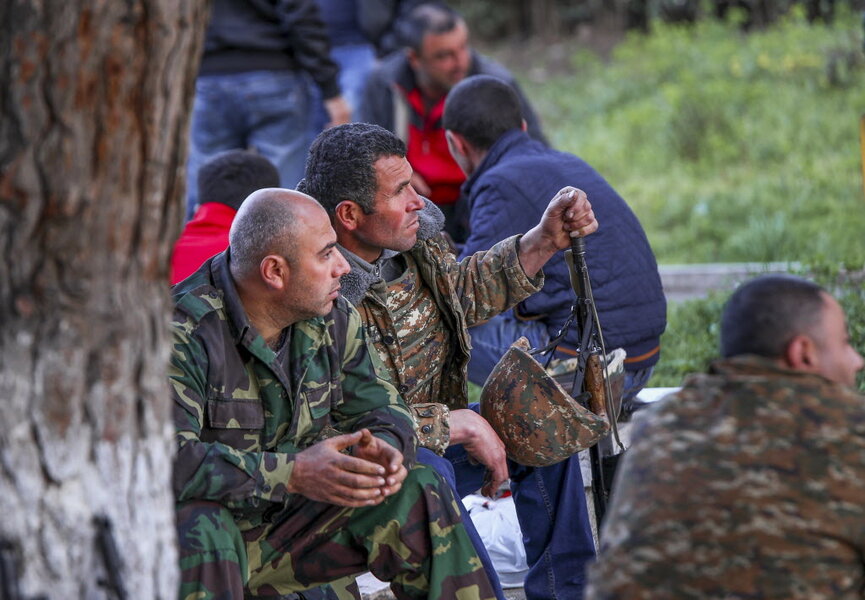How to soften big conflicts in small ways
Loading...
One rare tool in diplomacy is to not let diplomats play a leading role in resolving conflicts between nations. An alternative approach, known as “track II diplomacy,” entails informal contacts between individuals and groups such as academics, artists, athletes, or simply residents across a hostile border.
Such people-to-people exchanges can build up goodwill and trust. They are sometimes key in ending bullet-for-bullet exchanges.
The two Koreas are trying it. India and China, after a tense military standoff last year, are firming up plans for people-to-people contacts. Last month, 150 young people from Arab and European countries met in Qatar to find common ground on issues that divide their “civilizations.”
Now Armenia is exploring whether it can resolve a territorial dispute with Azerbaijan by using a “people-oriented” approach, according to the International Crisis Group (ICG). The two former Soviet states have been at odds since a war in the early 1990s over the Nagorno-Karabakh enclave and seven surrounding districts. Official distrust is high. Compromises seem illusive.
“We can change our approach,” one Armenian official told ICG. “Instead of discussing only political demands, we could begin to focus more on people and their needs, from two sides.”
What’s new in the conflict is that Armenia experienced a peaceful revolution last April that brought in a much more democratic government led by a journalist-turned-politician, Nikol Pashinyan.
The new prime minister is looking for creative ways to end a virtual state of war that holds back the economies of both countries. Many in his new government came out of civil society and have seen the power of grass-roots activism.
Since April, officials from both sides have made some contact. Their defense officials have restored lines of communication along the border. Their foreign ministers have met three times. But to break a diplomatic logjam, attitudes within each country need to shift.
Humanitarian gestures would help, starting with a release of prisoners or coordination on demining civilian areas near the front lines. Armenians could reach out to the Azerbaijanis displaced by the conflict.
As the long Israeli-Palestinian conflict shows, not all people-to-people contact or humanitarian gestures will lead to peace. Ethnic or religious identities that drive a conflict are not easily transcended by wider views of common interests and values. Yet the latest approach to the Armenia-Azerbaijan conflict is worth watching.
Often it takes nonpolitical contact or humanitarian gestures between peoples for progress. As the late American journalist Edward R. Murrow stated, “The real link in the international exchange is the last three feet, which is bridged by personal contact, one person talking to another.” By tender acts, peace can arrive from the bottom up.







